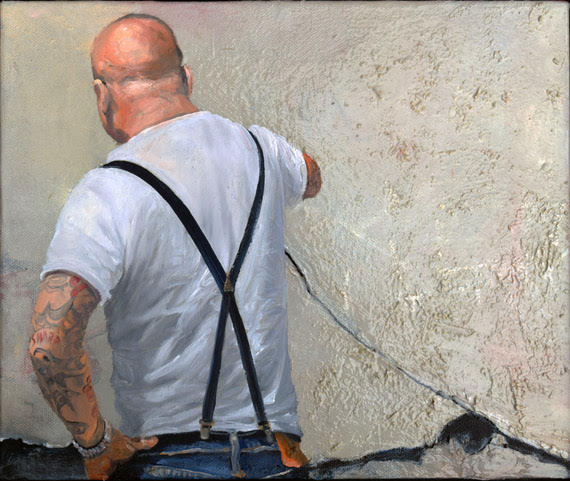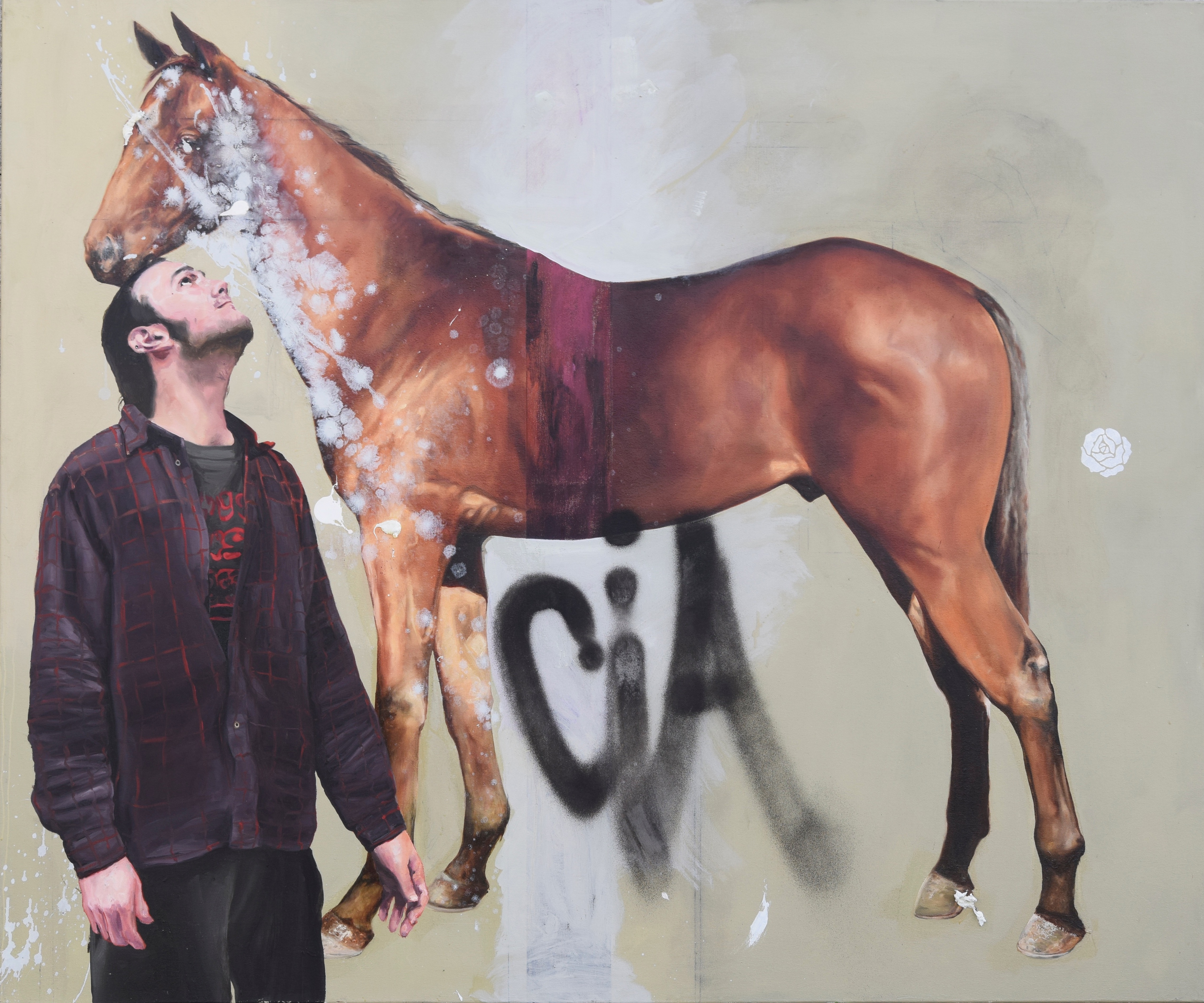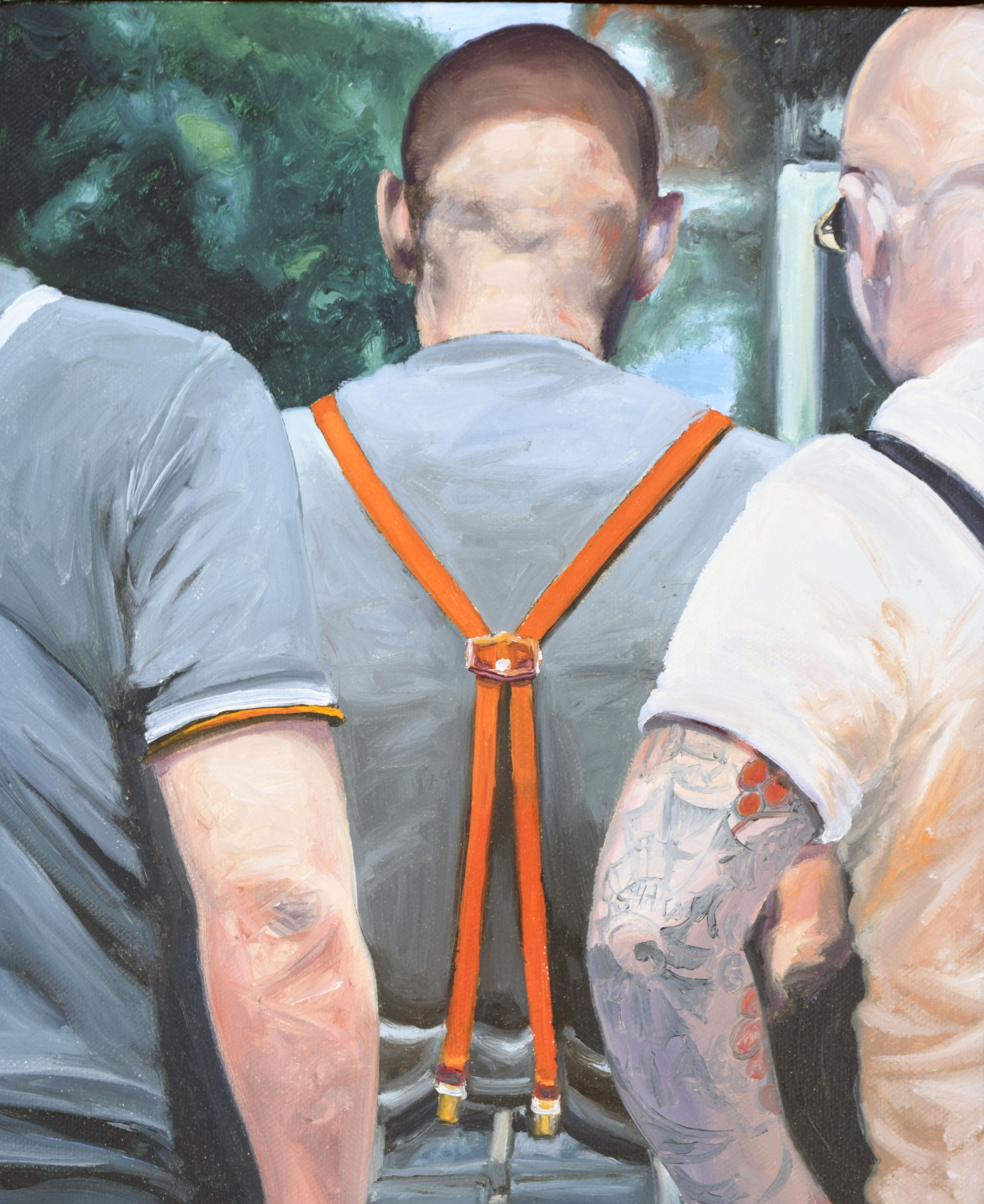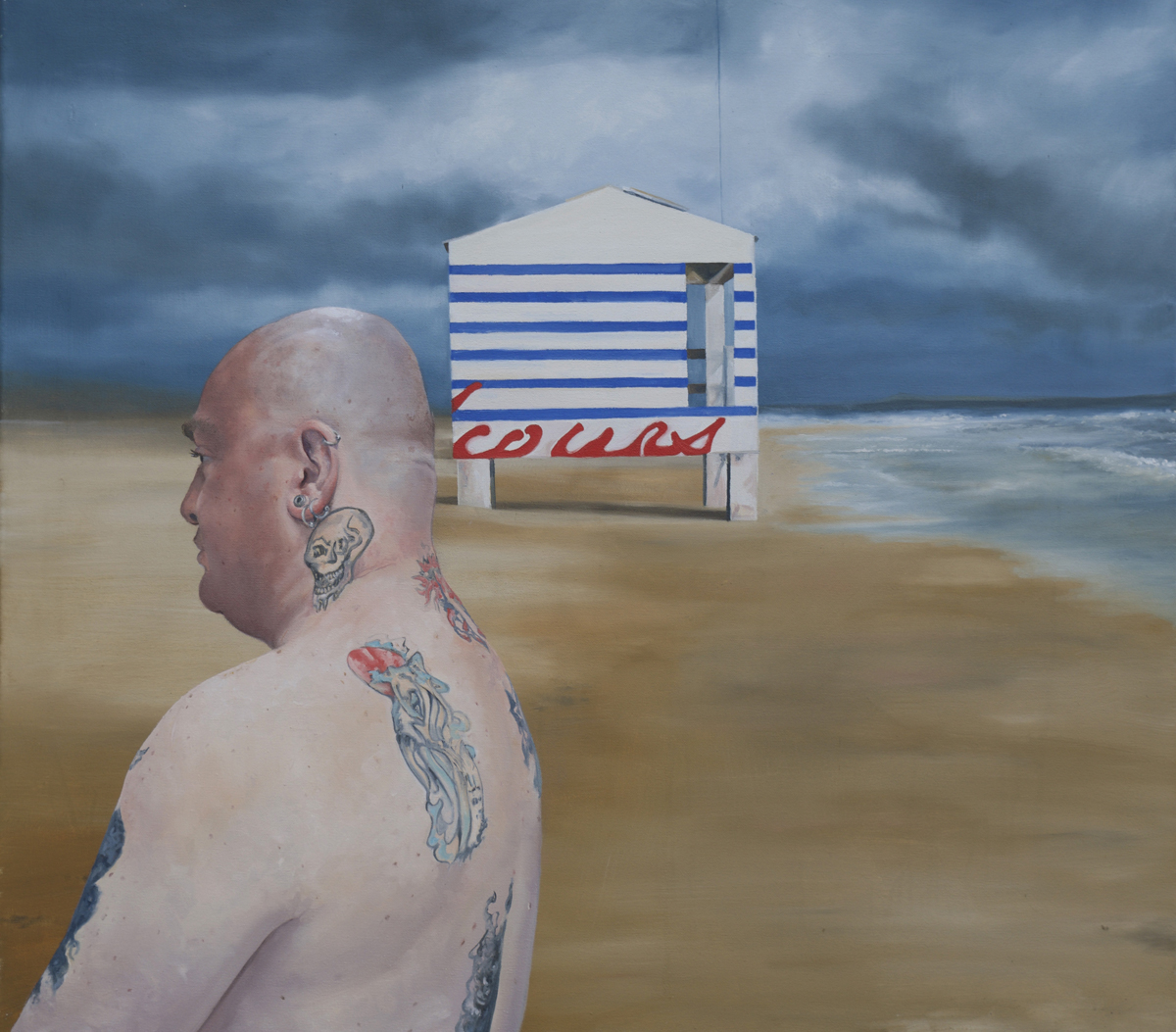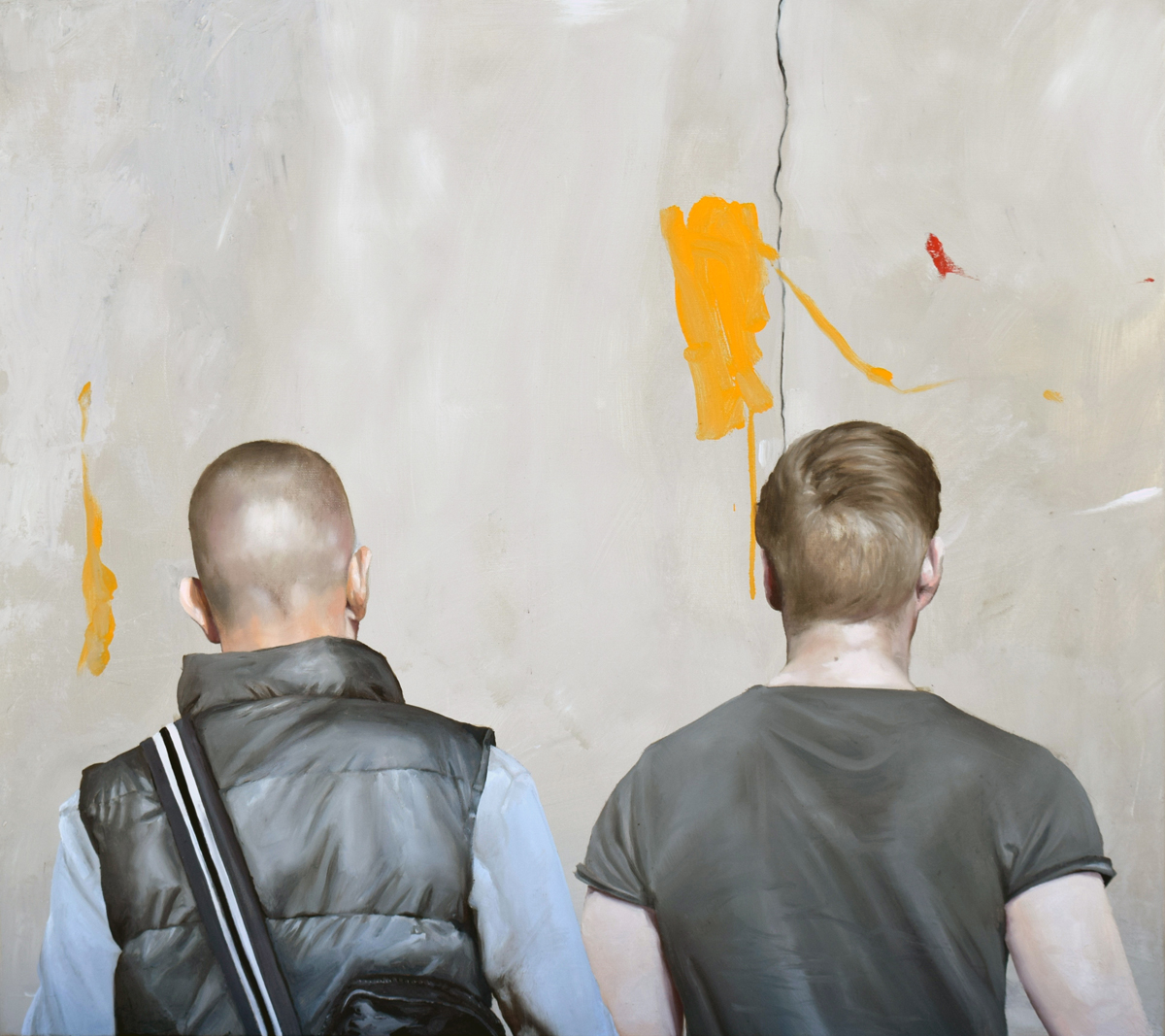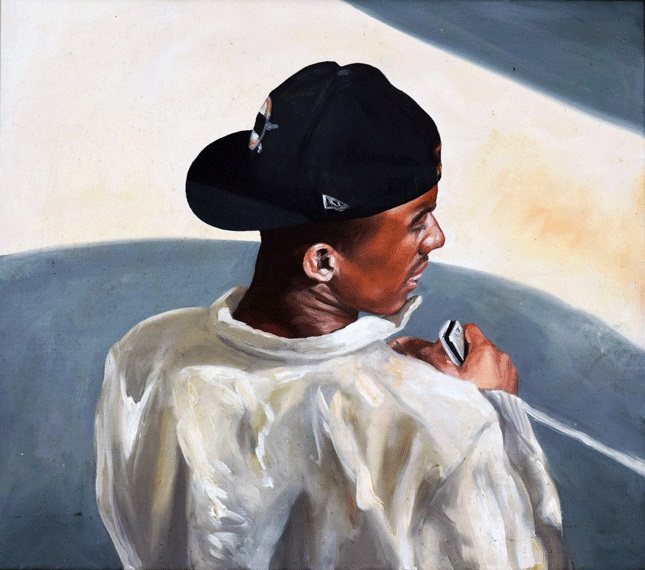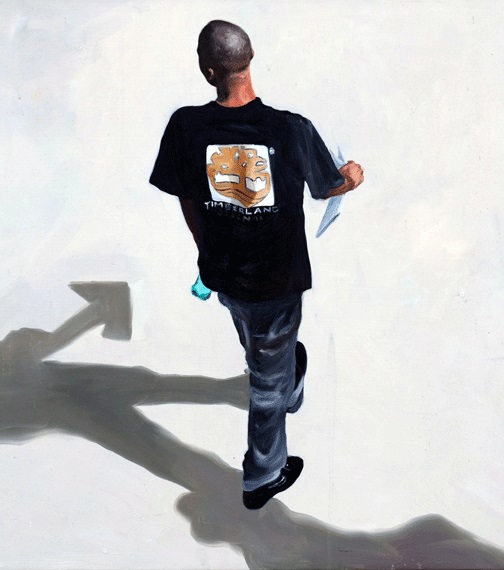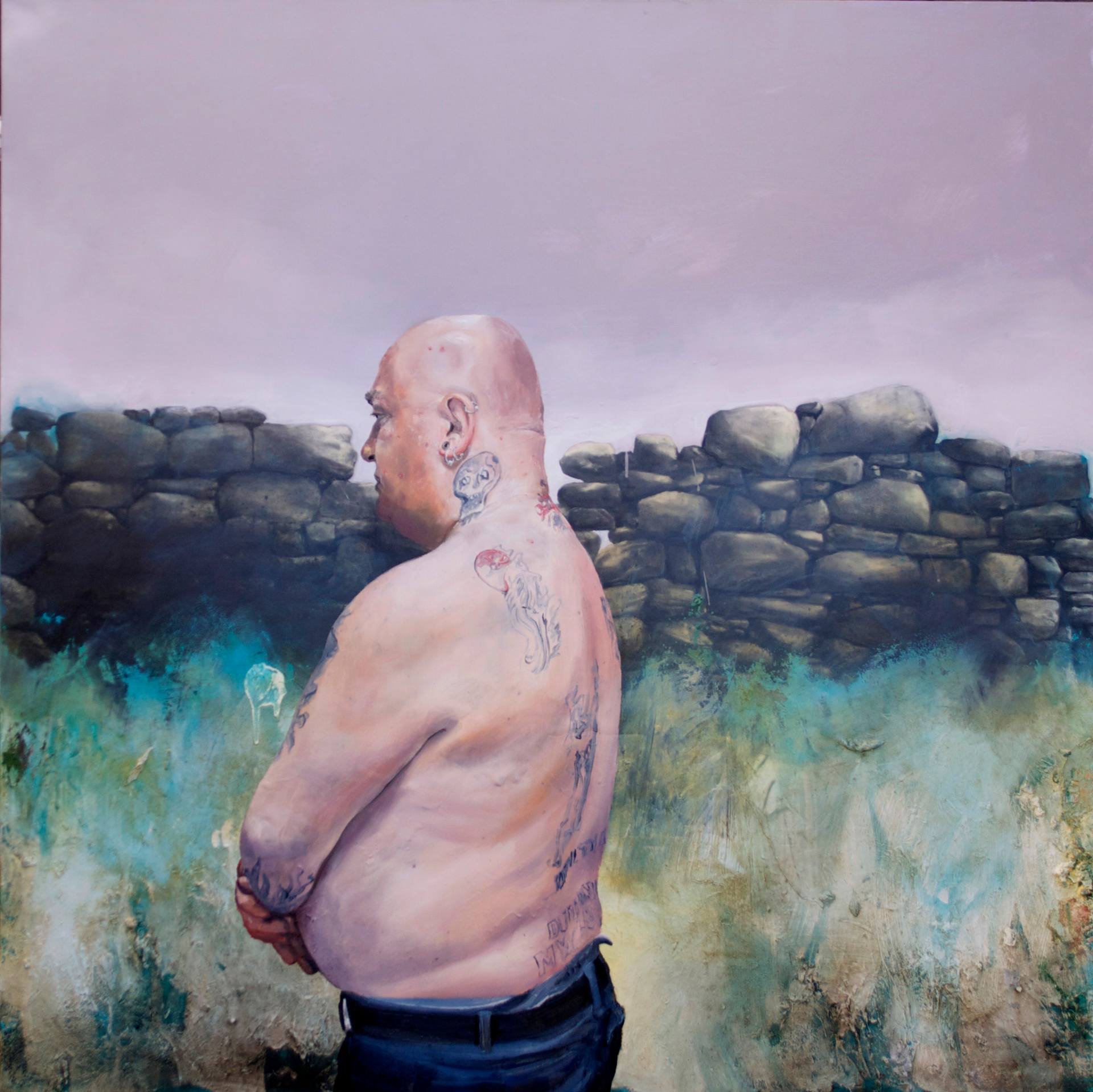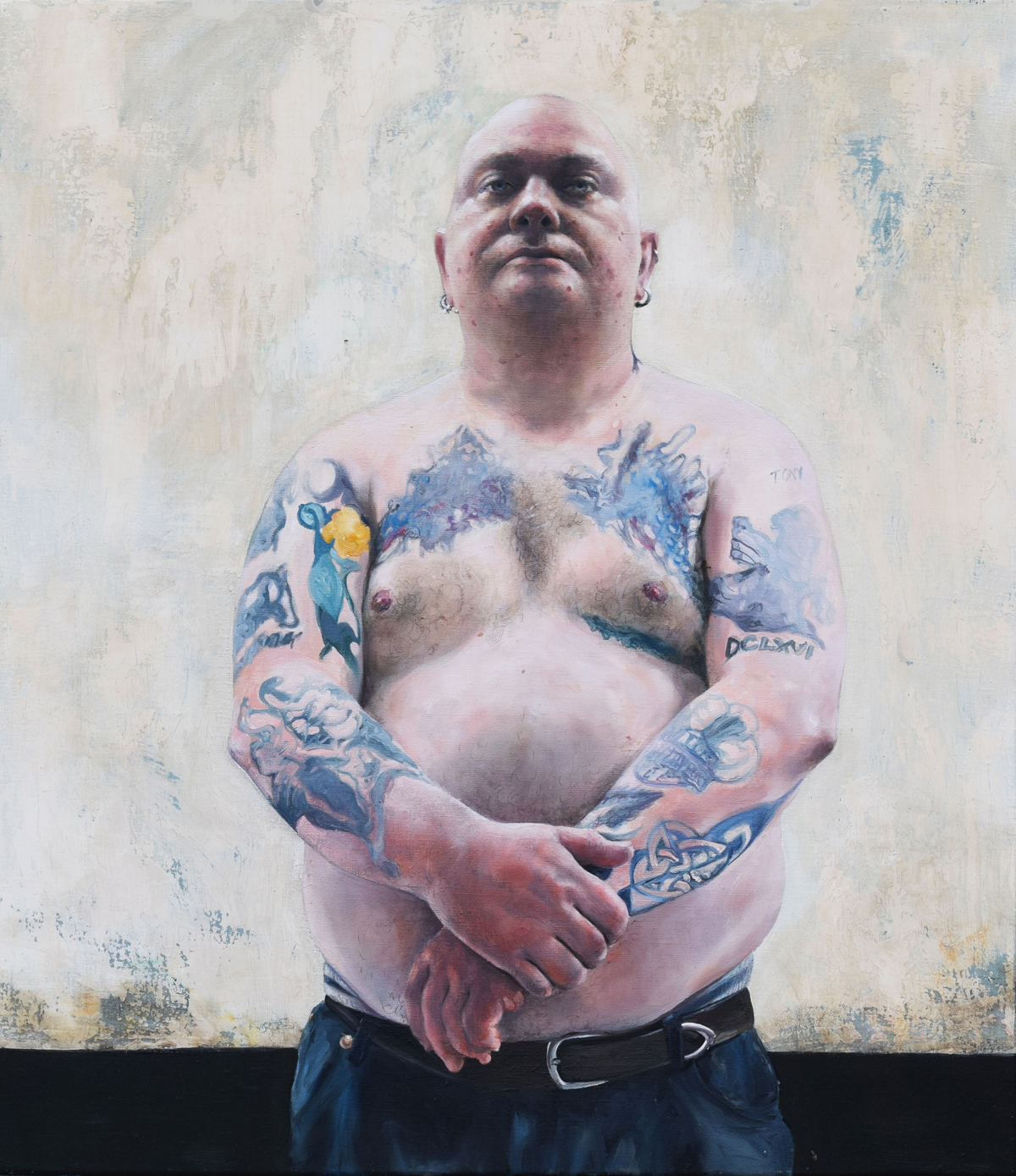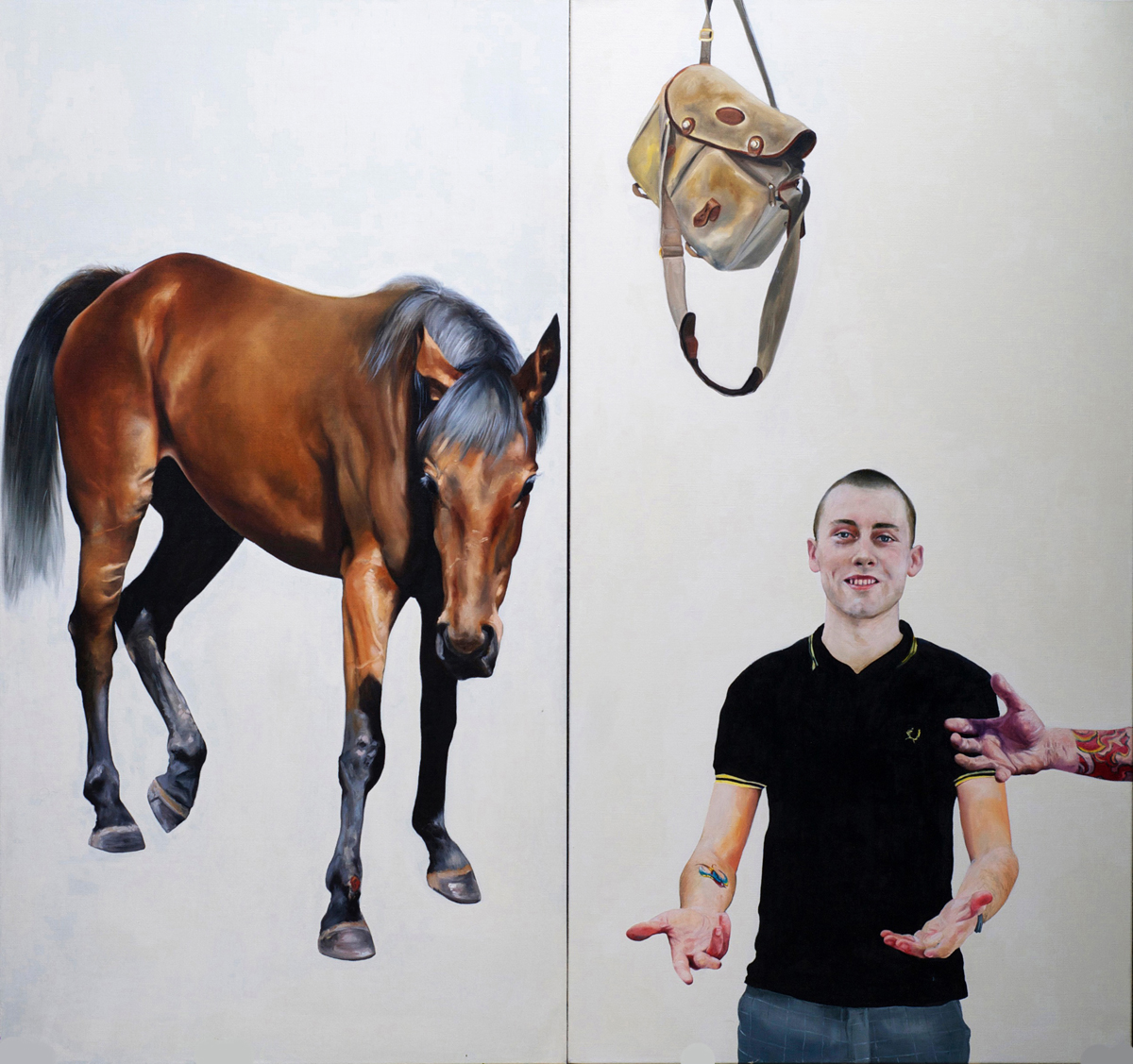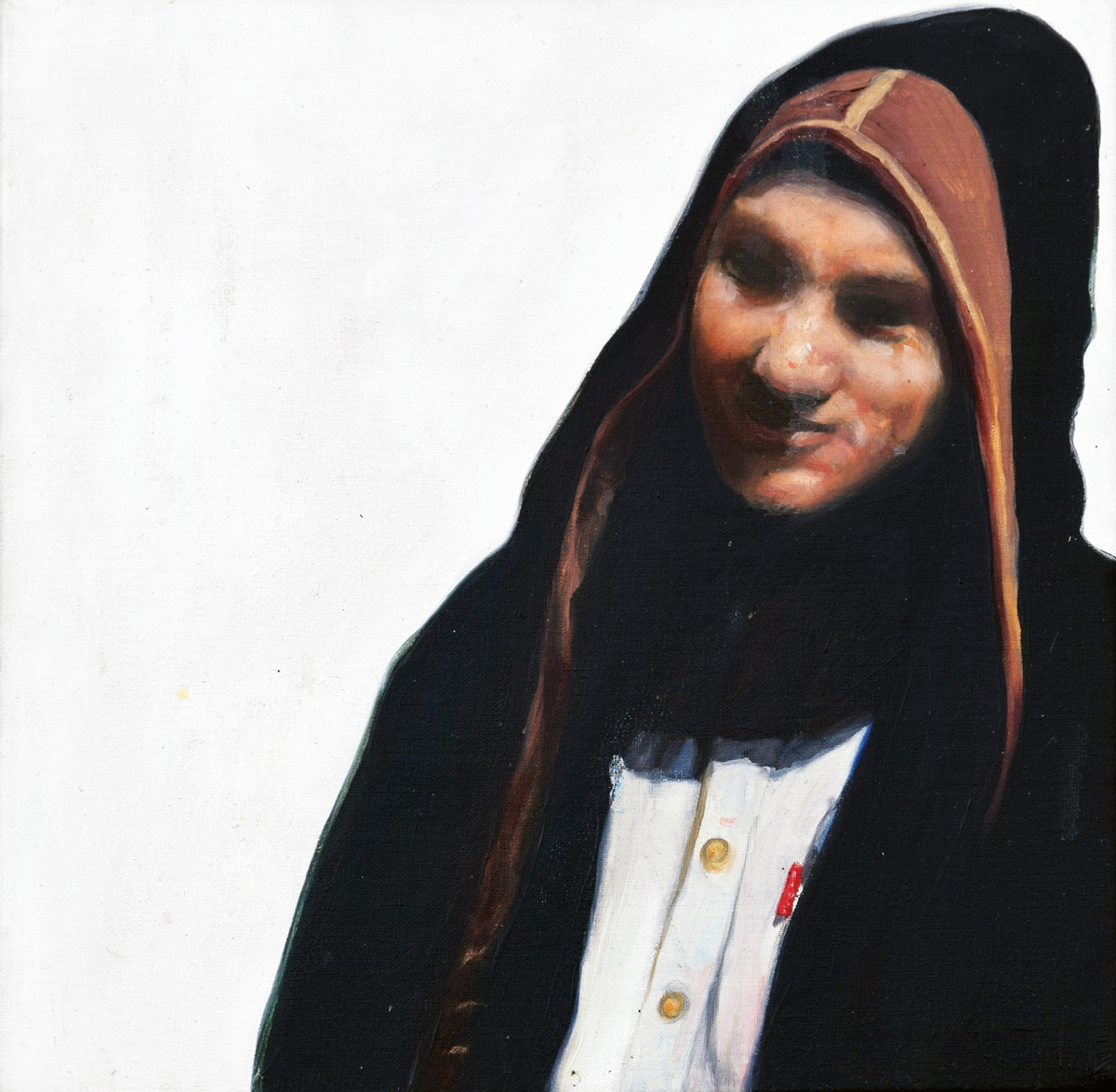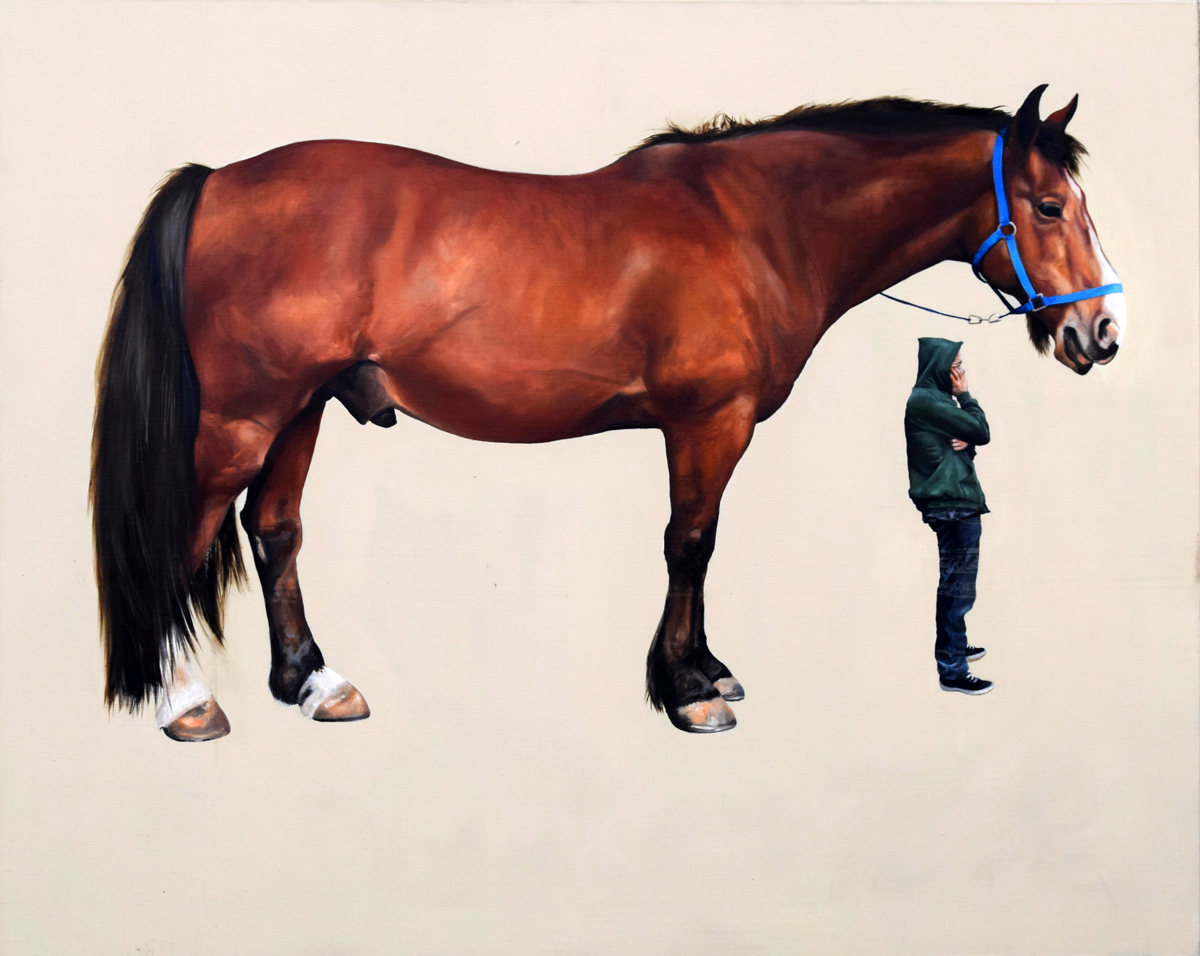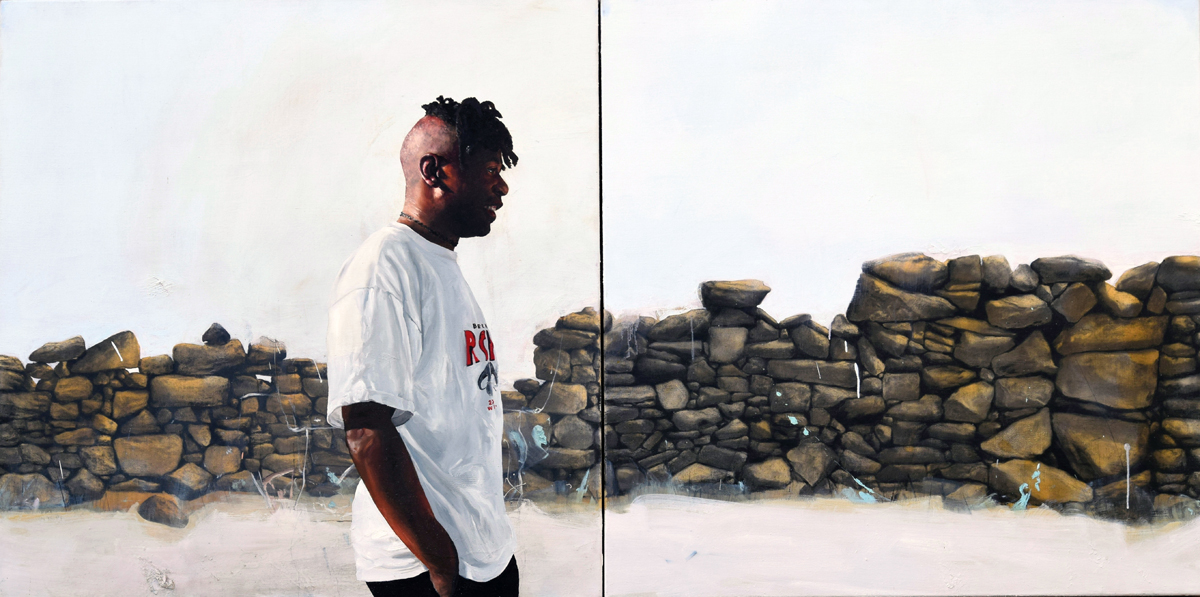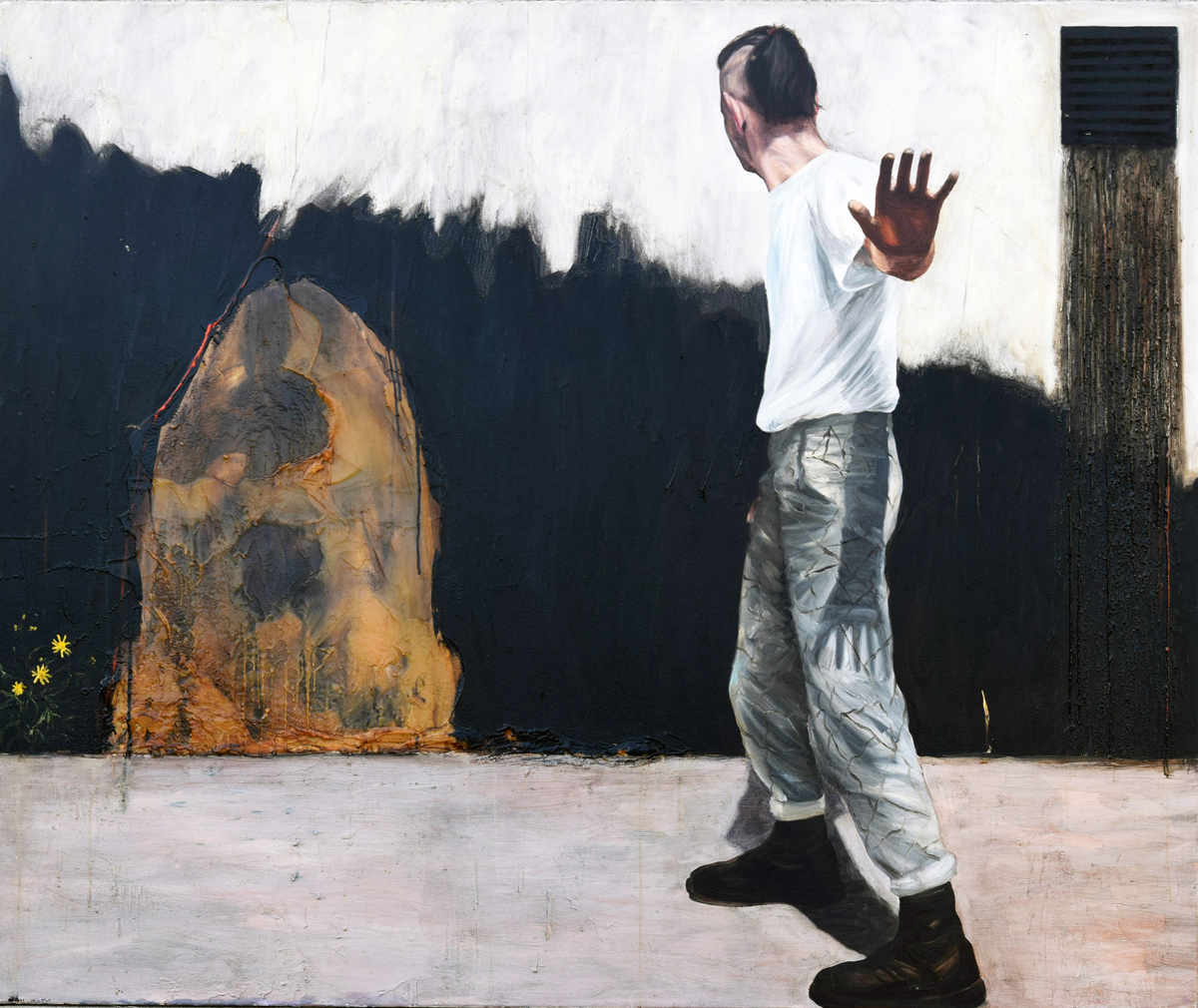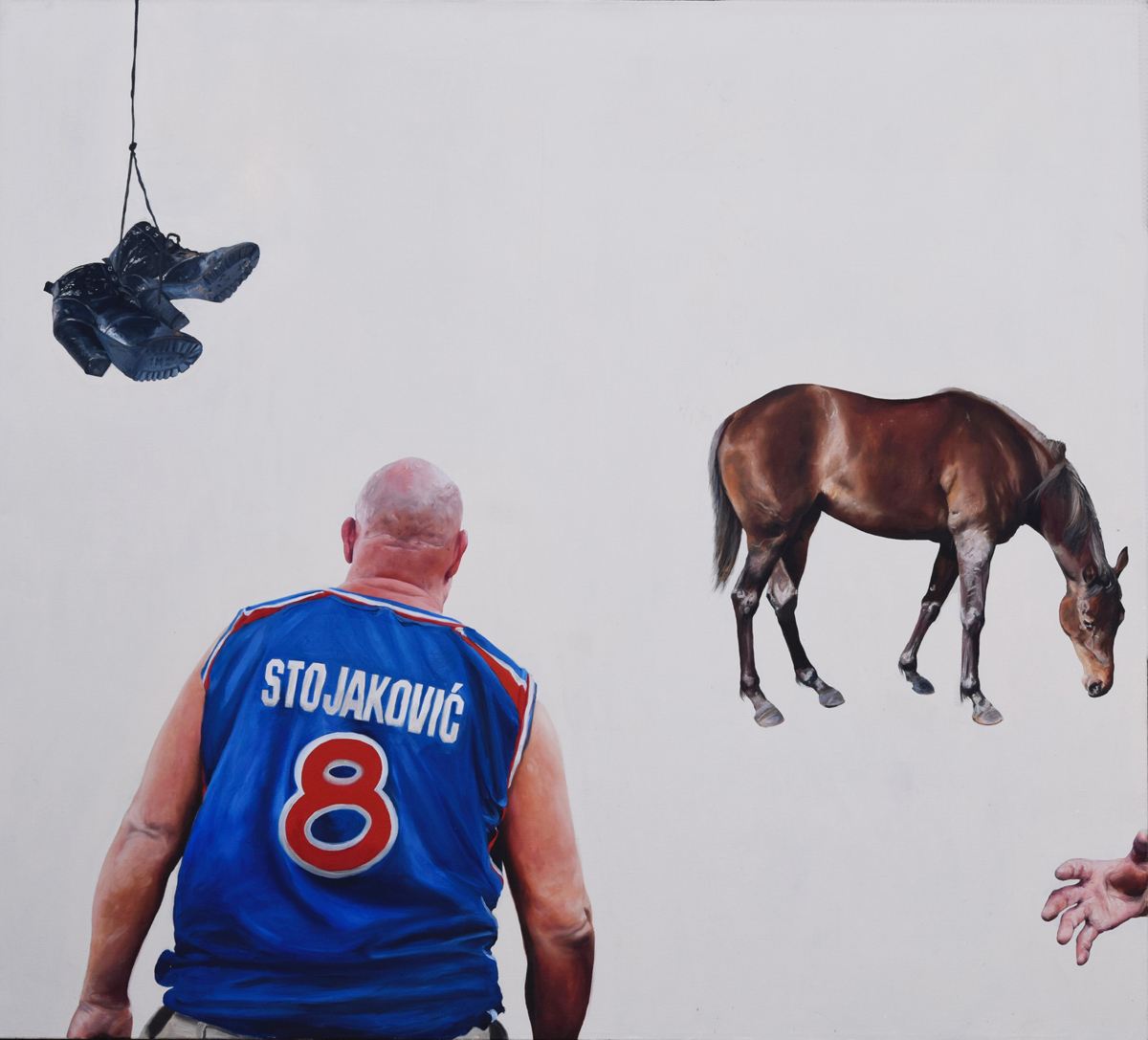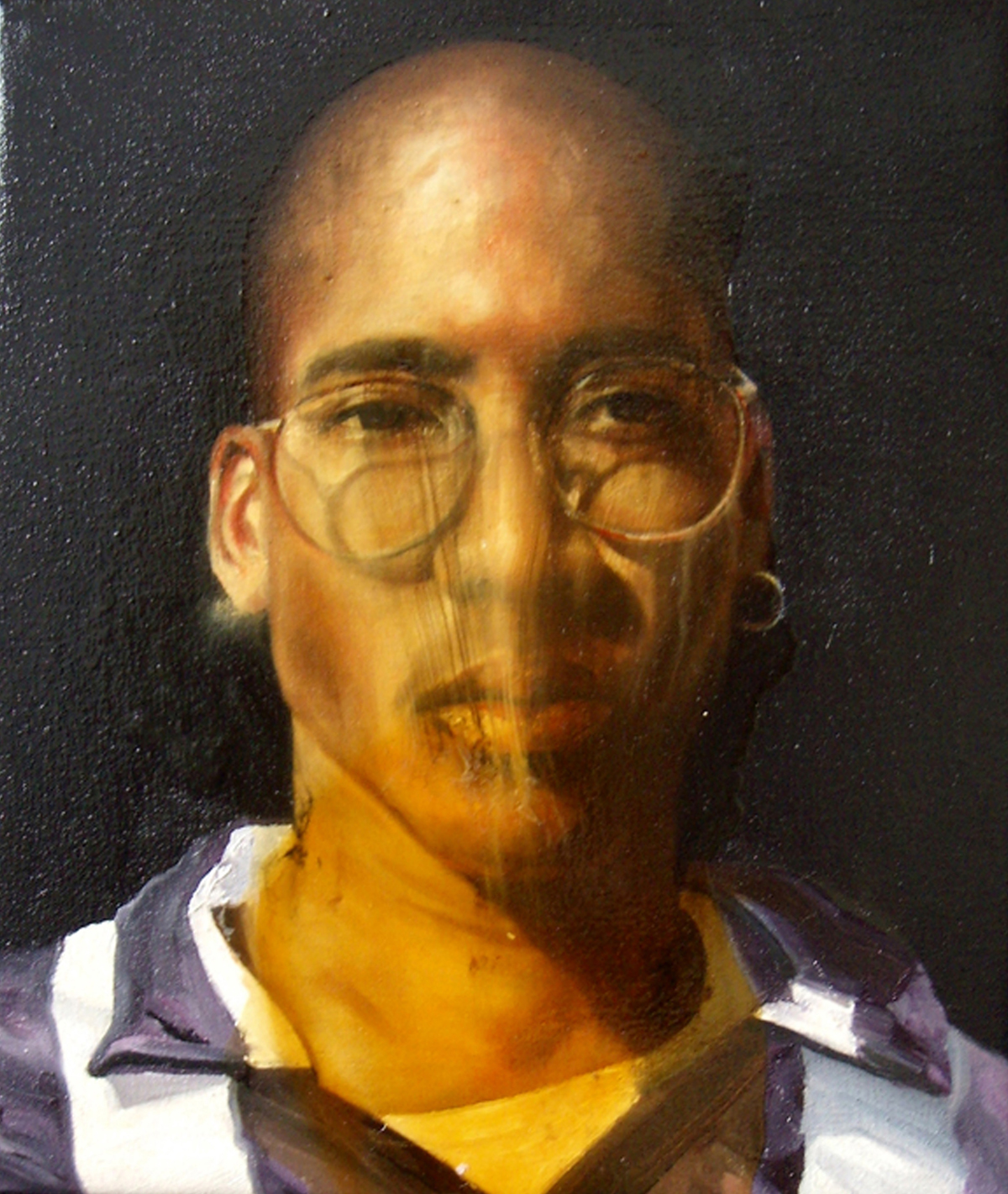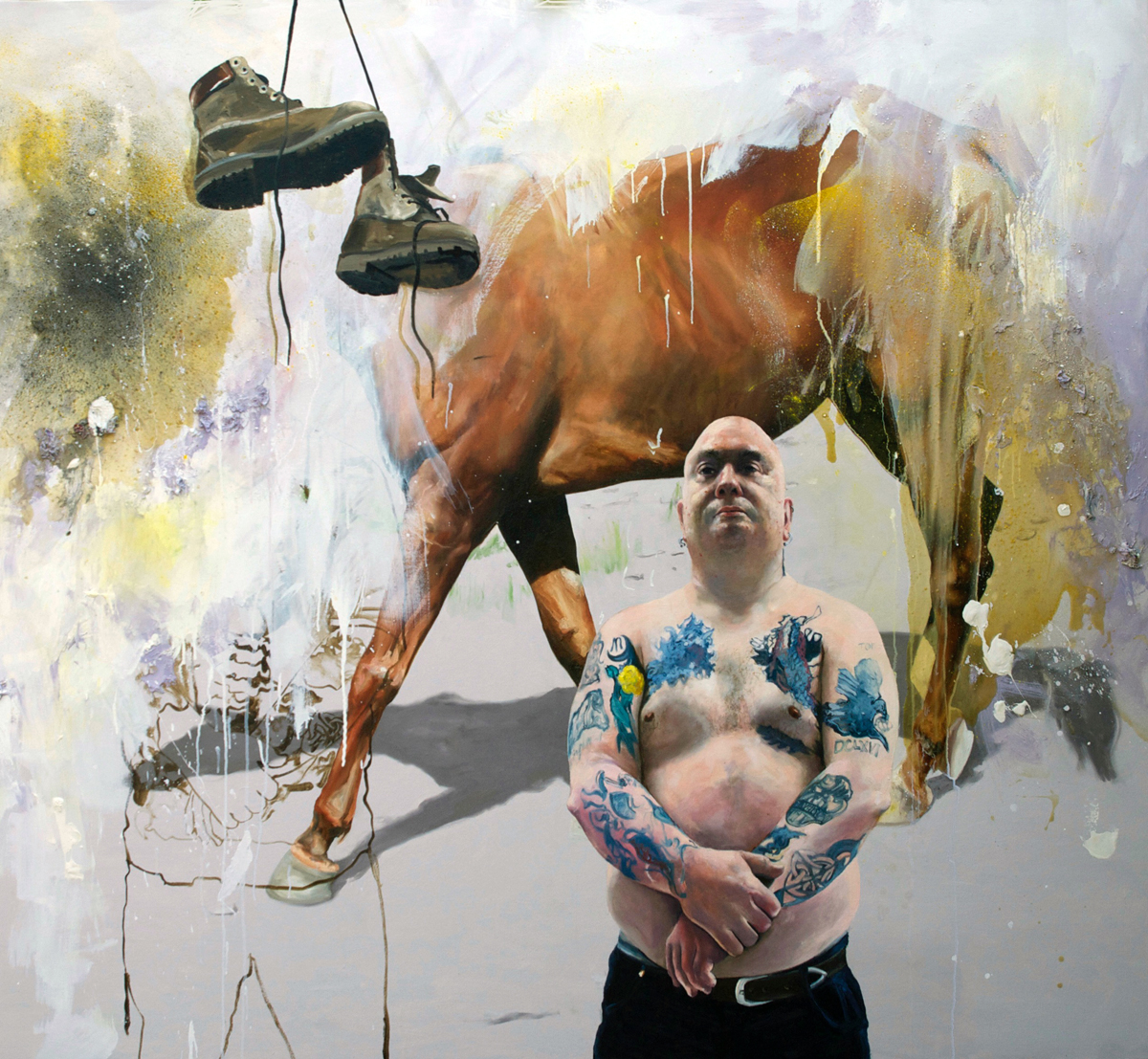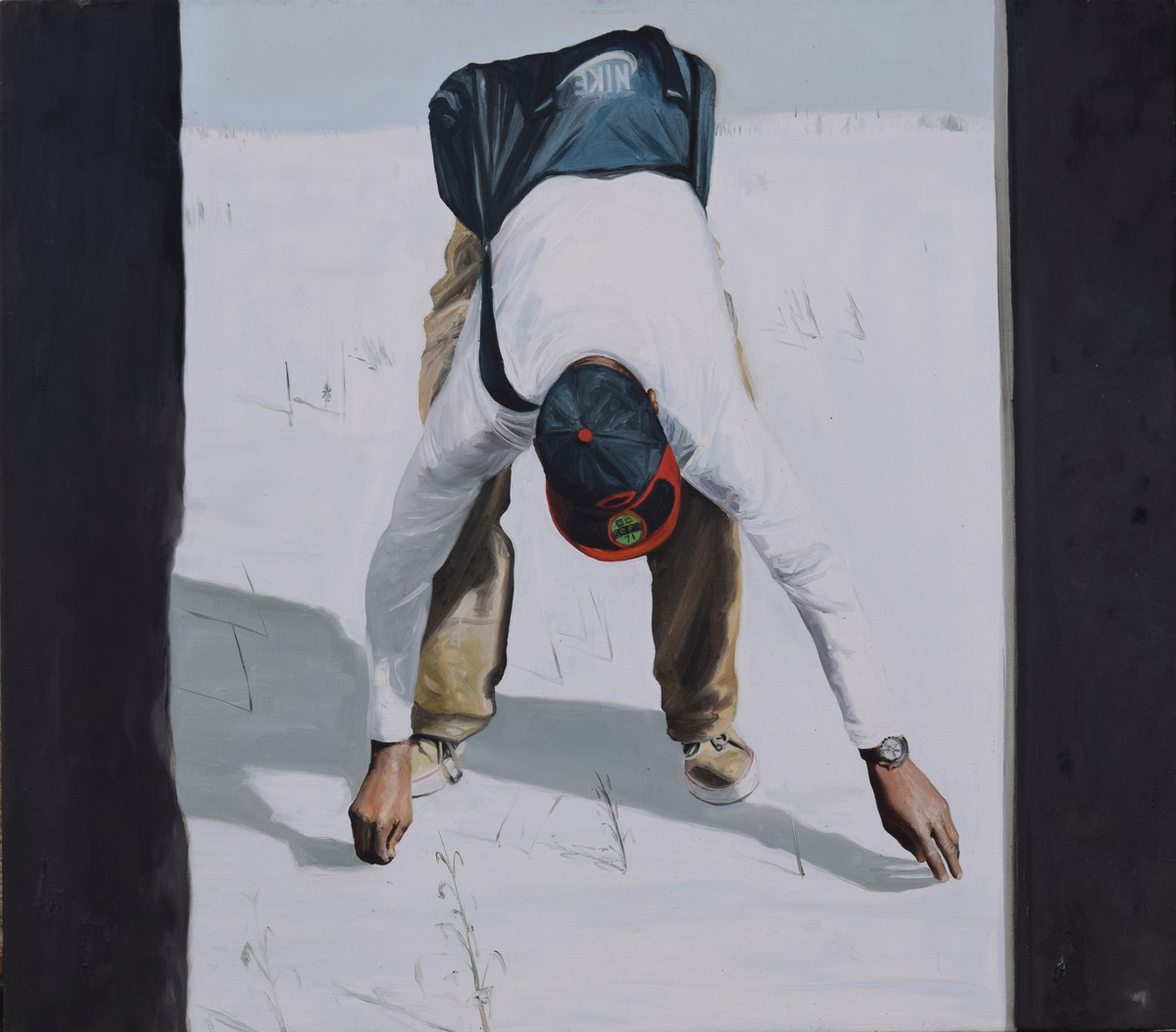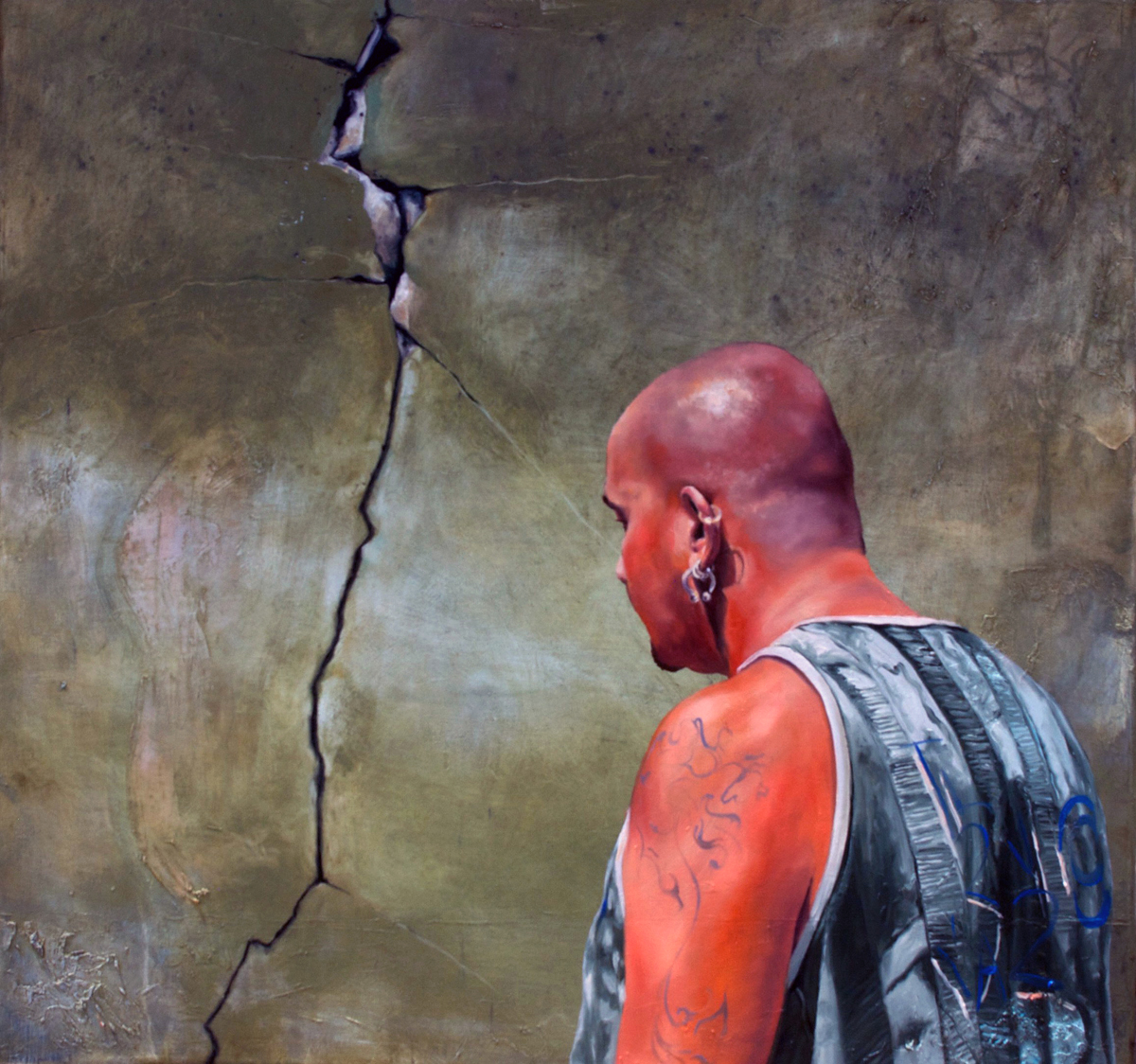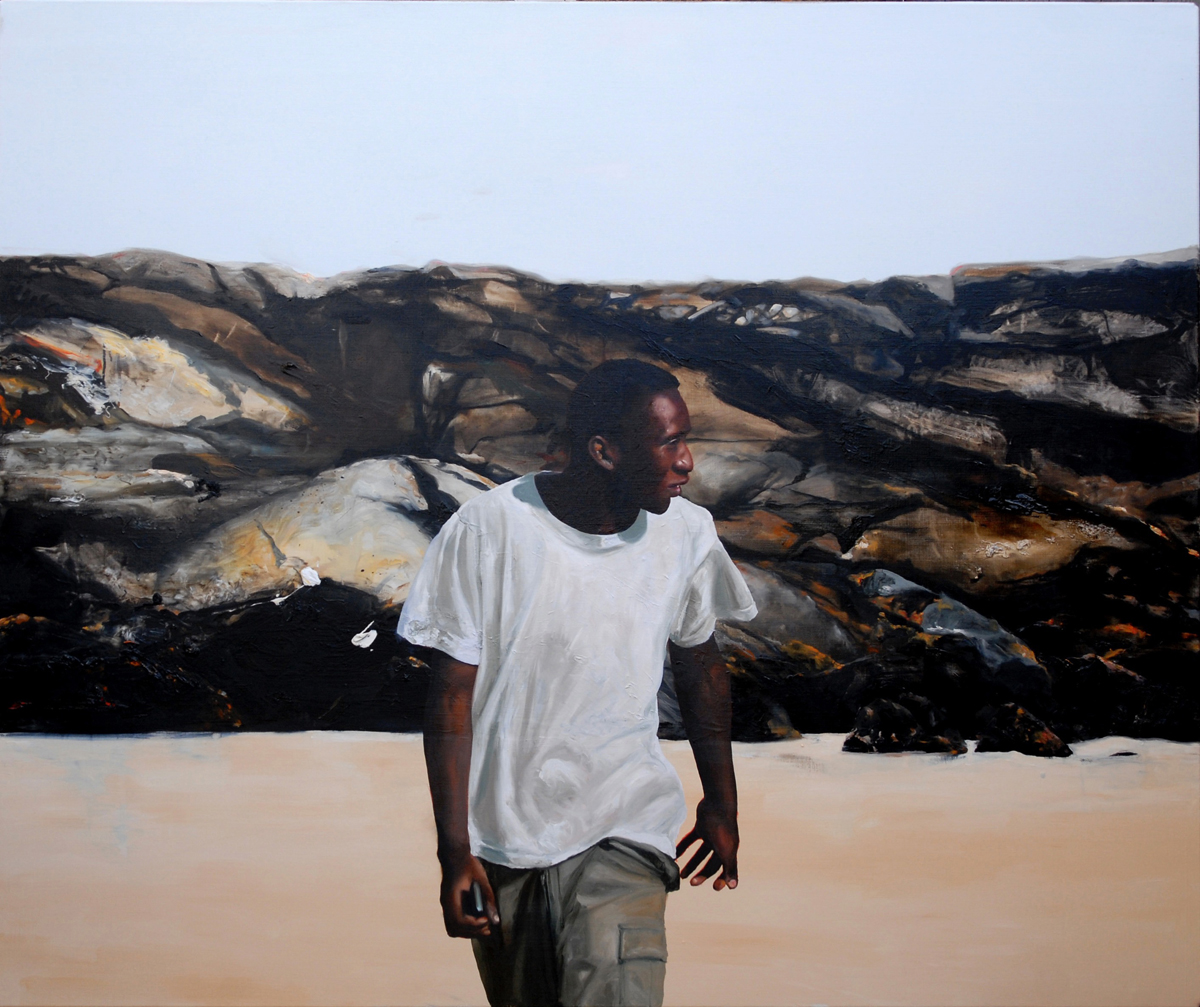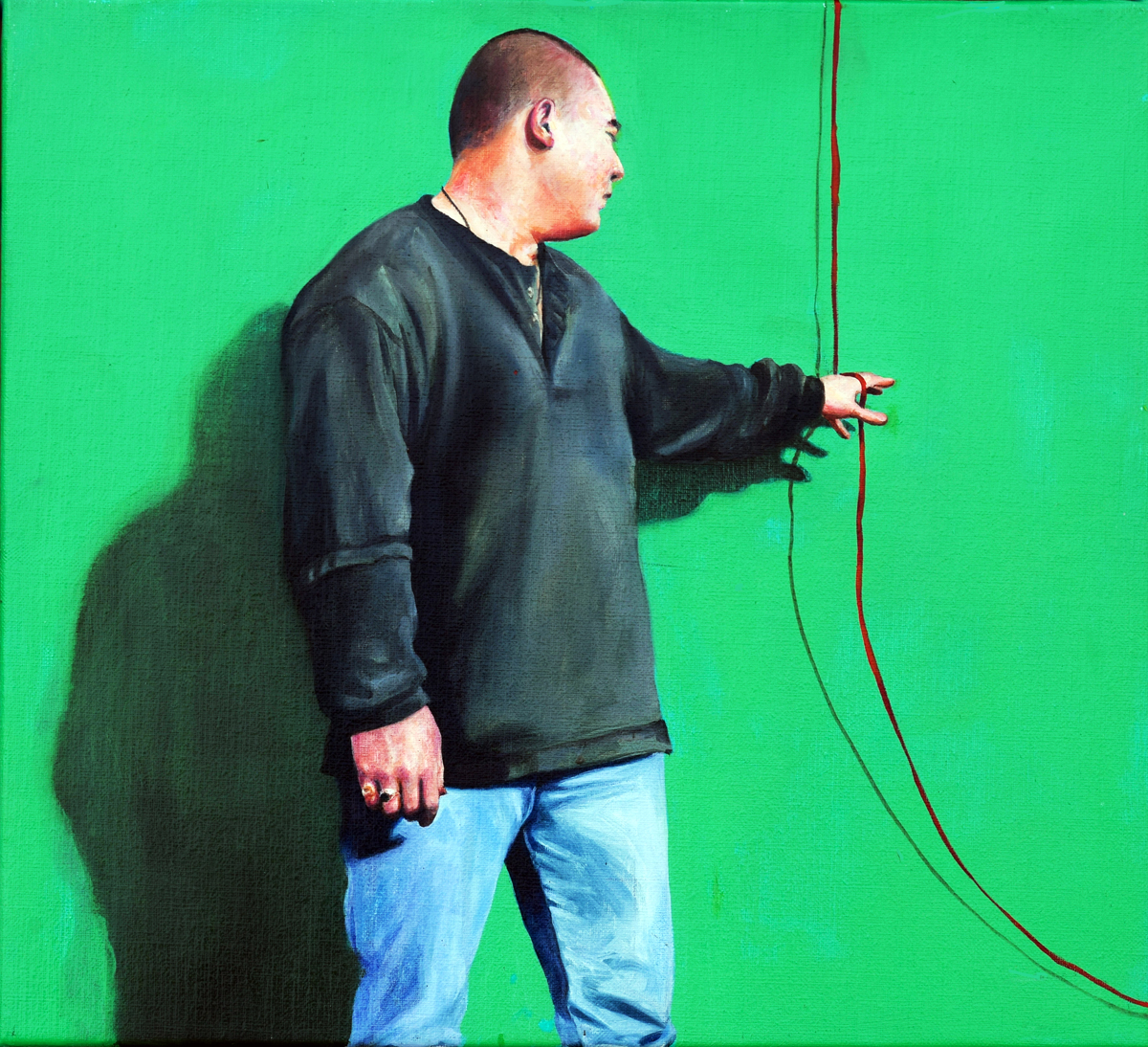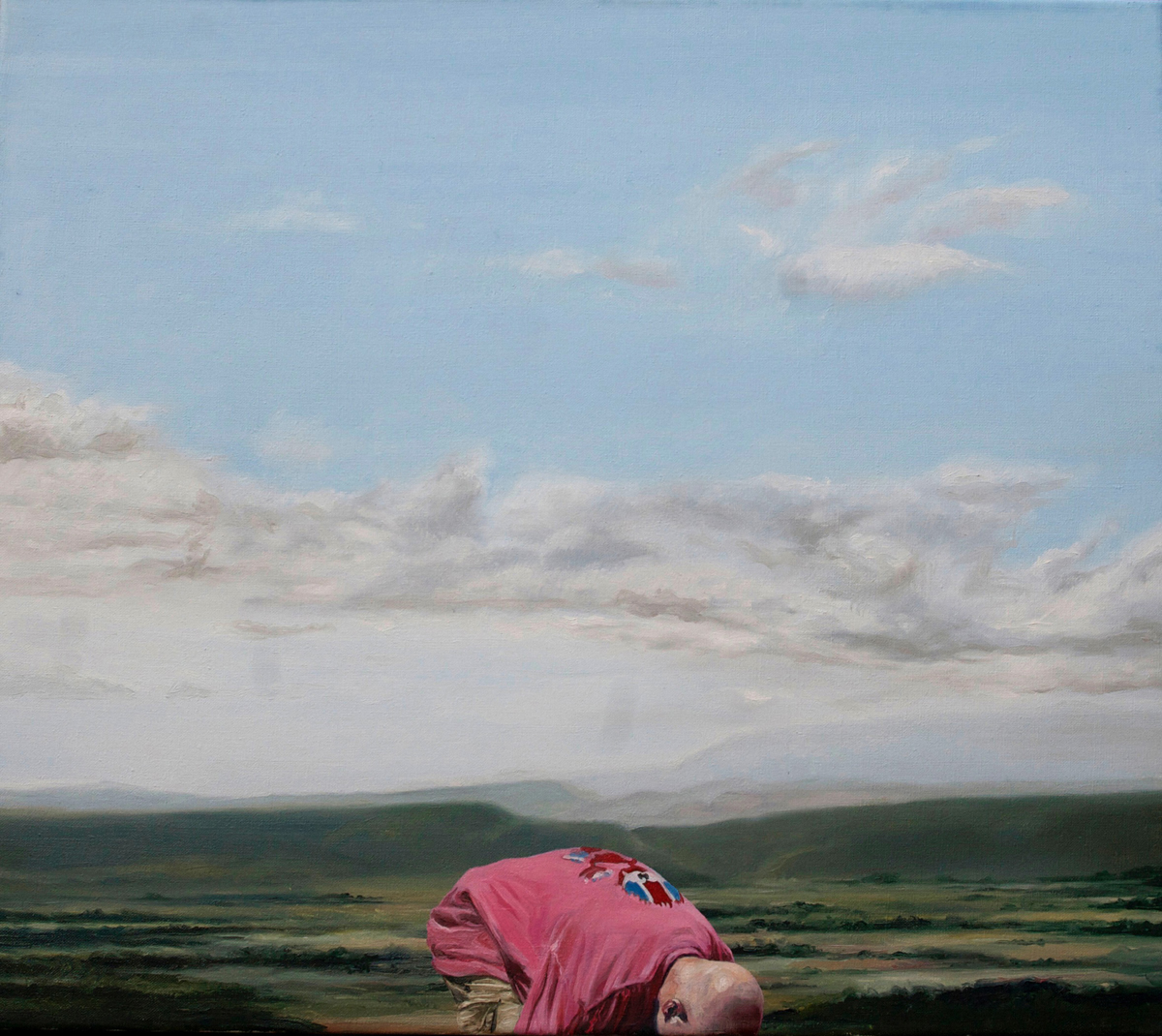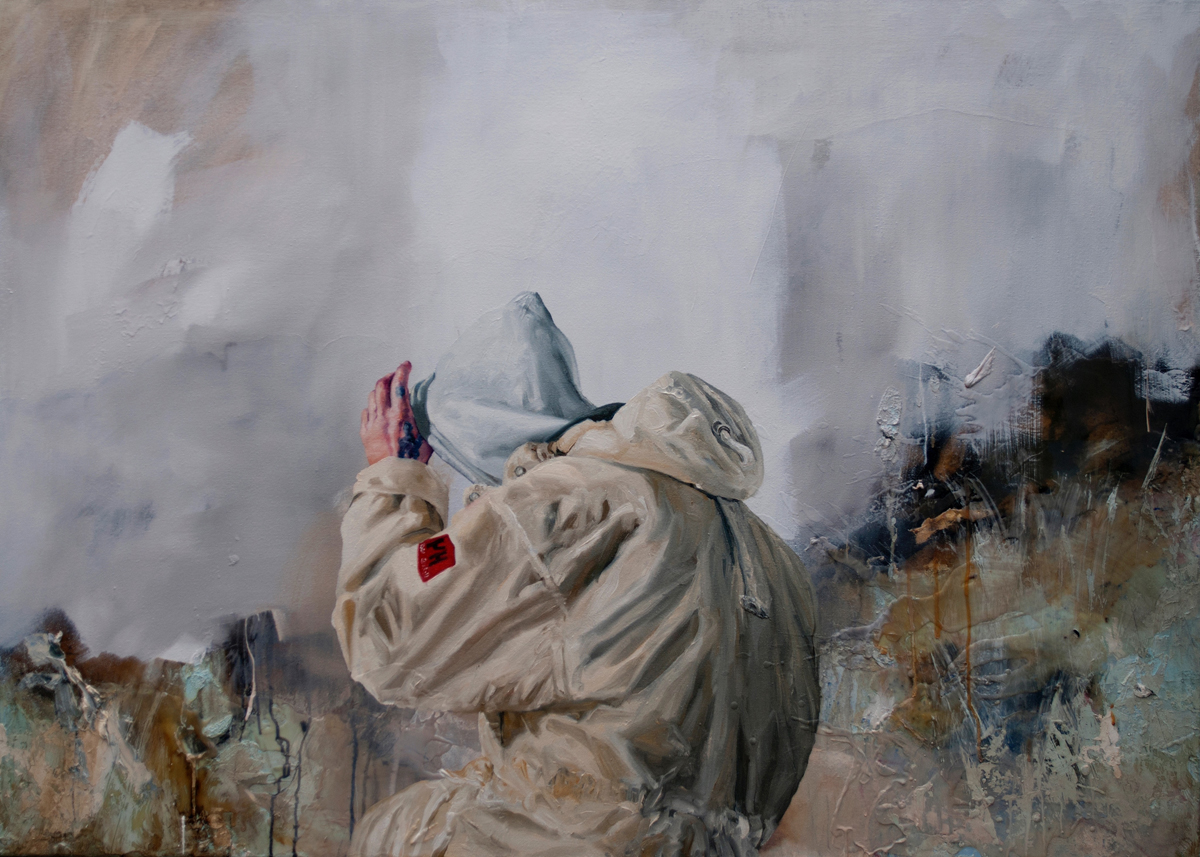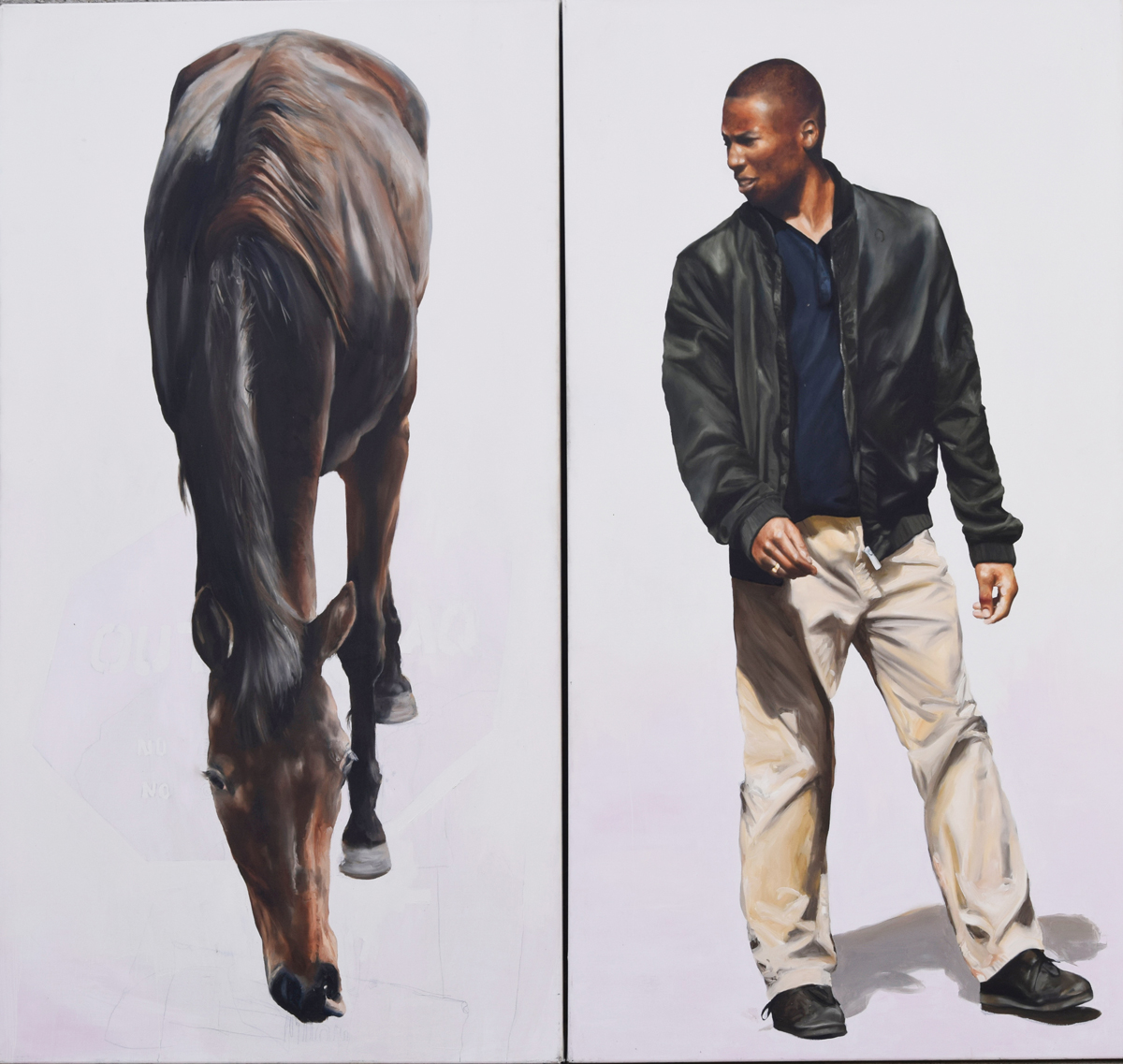Chris Stevens
Born 1956 1984-15 Living and working in London & France. 1974-78 University of Reading
Exhibitions
2017 Beaux Arts London, London Art Fair 2016 Beaux Arts, London (Solo) 2015 Contrastes, Galleria Emergentes dst, Braga, Portugal El Camino, Hortensia Gallery, London The Contemporary Portrait, Thompson’s, London West, Griffin Gallery, London REALITY, Modern & Contemporary British Painting, Walker Art Gallery, Liverpool Chris Stevens, Laxeiro Museo Municipal Ramon Ma Aller, Lalin, Spain (solo) 2014 Clive Beardsmore collection, Walsall New Art Gallery. Recent Work, Hortensia Gallery, London REALITY, Modern & Contemporary British Painting, Sainsbury Centre, Norwich. METROESCAPES Laxeiro Museo Municipal Ramon Ma Aller, Lalin, Spain 2013 Painted Faces, Saatchi Gallery, Griffin Gallery, London RAG 50 x 40, Riverside Studios, London Stars in Your Eyes, The Institute of Physics, London Elective Affinities, Brentwood Road Gallery, London 2012 Context, Roves & Roams, Reading. (solo) 40×40, Riverside Studios, London The 7th Ealing Open, PM Gallery, London 2011 40×40, Riverside Studios, London XIV Interbifep, Galerija Portreta, Tuzla, Bosnia & Herzegovena X Biennial Painter Laxeiro, Museo Municipal Ramon Ma Aller, Lalin, Spain Antes e Agora, Museo Municipale, Ourense, Spain 2010 Cluster, Stone Gallery, Dublin 6th Ealing Open, PM Gallery, London Twelve Degrees, Apricot Gallery, London 2009 Group exhibition, De Queeste, Brussels 1984, Kowolsky Gallery, London 2008 Time Space and the Other, De Queeste Kunstkamers, Belgium 2007 Galerie Radekers, Amsterdam (solo) Modern Figure, Oisin Gallery, Dublin Beyond The Narrative, PM Gallery, London 2006 Smelik & Stokking Galleries, Rotterdam (solo) RAG, Riverside Studios, London Heads, Flowers East, London Studio Show, Space Studios, Richmond House, London 50over50, University of Brighton Gallery Miniatuur 06, Smelik & Stokking Galleries, Den Haag, Amsterdam & Rotterdam 4th Ealing Open, PM Gallery, London 2005 Smelik & Stokking Galleries, Amsterdam (solo) Smelik & Stokking Galleries, Den Haag (solo) Miniatuur 05, Smelik & Stokking Galleries, Den Haag, Rotterdam & Amsterdam Sven Hoekstra, Frank Dekkers, Rob van Hoek & Chris Stevens. Smelik & Stokking Galleries, Rotterdam 2004 35Jaar, Smelik & Stokking Galleries, Den Haag 2003 Smelik & Stokking Galleries. Amsterdam Miniature, Kyubidou Gallery, Tokyo, Japan 2002 Miniature, Raid Projects Gallery, Los Angeles, USA Sunday Times, Singer & Friedlander Water Colour Competition, Mall Galleries, London Golden, Britart Gallery, London Eidectic, Britart Gallery, London 2001 Smelik & Stokking Galleries, Den Haag (solo) Ealing Open, PM Gallery, London 2000 Smelik & Stokking Galleries, Amsterdam (solo) Gezicht op Kunst, Zwolshe Algemeene, Nieuwegein, Holland 1999 PM Gallery, London (solo) KunstRAI, Amsterdam The Future Famous, Unicorn Gallery, London 1998 Southampton Arts Centre KunstRAI, Amsterdam Miniatures, Smelik & Stokking Galleries, Den Haag Ealing Open, PM Gallery, London 1997 Smelik & Stokking Galleries, Den Haag. (solo) Fabulous Transgressions, Reg Vardy Gallery, University of Sunderland KunstRAI, Amsterdam, The Netherlands 1996 BP Portrait Award, National Portrait Gallery, London First Sight, PM Gallery, London KunstRAI, Amsterdam, The Netherlands 1995 Smelik & Stokking Galleries, Den Haag. (solo) Southampton Arts Centre.(solo) BP Portrait Award, National Portrait Gallery, London KunstRAI, Amsterdam, The Netherlands Whitechapel Open Studios, Deborah House, London 1994 Smelik & Stokking Galleries, Den Haag. (solo) Whitechapel Open Studios, Deborah House, London 1993 Southampton Arts Centre Drawings of Distinction, Metropolitan Wharf, London Whitechapel Open Studios, Deborah House, London 1992 Sue Williams Gallery, London. (solo) River, Silence, Land, Figure, Maws Craft Centre, Telford BP Portrait Award, National Portrait Gallery, London Whitechapel Open Studios, Deborah House, London 1991 Smelik & Stokking Galleries, Den Haag Modern Life, Black Bull Gallery, London Seven City Artists, Tobacco Dock, London Face Values, Quicksilver Gallery, Middlesex University, London International Contemporary Art Fair, with Sue Williams, London Whitechapel Open Studios, Deborah House, London 1990 Sue Williams Gallery, London (solo) Black Bull Artists, Black Bull Gallery, London BP Portrait Award, National Portrait Gallery, London Fussball In Der Kunst, Pfalzgalerie, Kaiserlautern, Germany International Contemporary Art Fair, with Sue Williams, London 1989 Critics Choice 5, Air Gallery, London Fussball In Der Kunst, with Andy Warhol and Marcus Lupertz, Leopold-Hoersc Museum, Doren, Germany Whitechapel Open Studios, Deborah House, London International Contemporary Art Fair, with Sue Williams, London 1988 Black Bull Gallery, London (solo) Sue Williams Gallery, London (solo) The Maginot Line, Riverside Studios, London 1987 Black Bull Gallery, London (solo) 1986 Beyond Appearance, touring exhibition in the Southern Arts region Spirit of London, The Royal Festival Hall, London John Player Portrait Award, National Portrait Gallery, London Artists in Industry, touring exhibition in the West Midlands Spirit of London, Mall Galleries, London 1985 Conduit Galleries, London (solo) Axiom, Centre for the Arts, Cheltenham (solo) Howard Gardens Gallery, South Glamorgan Institute of Education, Cardiff (solo) Glynn Vivian Museum & Art Gallery, Swansea (solo) Art at Work, The South London Gallery, London Art at Work, Carlisle Museum & Art Gallery, Carlisle Axiom Review, Axiom, Centre for the Arts, Cheltenham 1984 Northern Centre for the Contemporary Arts, Sunderland (solo) Works on Paper, Henry Art Gallery, University of Washington Seattle, USA 1983 Art at Work, Hatton Gallery, University of Newcastle Upon Tyne The River Wear Exhibition,Northern Centre for the Contemporary Arts, Sunderland Axiom, Centre for the Arts, Cheltenham (solo) South Hill Park, Bracknell (solo) Images of Youth, Southern Arts touring exhibition (solo) 1978 Hiscock Gallery, Portsmouth 1977 New Contemporaries, Royal Academy, London 1975 Canvas, Willis Museum, Basingstoke
Collections
Calouste Gulbenkian Foundation, London Museo Municipal Lalin, Spain National Gallery of Wales Nat Kramer, New York North Street Films, Los Angeles Northern Arts Mercury Films, Los Angeles Galerija Portreta, Tuzla, Bosnia & Herzegovena Standard Chartered Bank Unilever University of Durham Victoria & Albert Museum Walsall New Art Gallery, Clive Beardsmore collection Private collections UK, USA, South Africa, Europe
Awards and Commissions
2013 Painted Faces prize winner, Saatchi Online 2006 Standard Chartered Bank, London 2006 50over50 winner 1990 BP Portrait Award prize winner Painting in Los Angeles Various commissioned work for North Street Films and Mercury Films including paintings for the movie, ‘Scenes From The Class Struggle in Beverly Hills’ 1985 Calouste Gulbenkian Foundation Award, ‘Artist as Printmaker’ 1984-85 West Midlands Arts residency at Birmingham Airport Arts Council residency at Sunderland Football Club 1982 South West Arts award for Painting 1981 Set design for Cossi fan Tutte, Cheltenham Music Festival 1981 Southern Arts award for Painting
Curating
2014 Reality, Modern & Contemporary British Painting, Sainsbury Centre, Norwich 2013 Elective Affinities, Brentwood Road Gallery, London 2011 40 x 40, Riverside Studios, London Beyond The Narrative, PM Gallery, London 1980-83 Director, Cheltenham Arts Centre
Selected Bibliography
The Contemporary Portrait, catalogue for the exhibition. Thompson’s London. 2015 Richard Smirke, Varnished Truth, Big Issue 14/8/15 Laura Moure, Estereotipos reflejados bajo el pincel Faro De Vigo, 8/8/15 Elena Cuiña, La Voz de Galicia, Chris Stevens trae a Lalin as súas obras da xente corrente 7/8/15 Omid Yaghoobi, An opportunity to deal with national issues, political and socialEtamad Newspaper, Iran 2015 Reality, Wall Street International 2015 Catherine Jones Reality in Liverpool, Liverpool Echo, 2015, Rachel Will, British Painters.. Blouinartinfo International, Duncan Smith, Brian Deighton, West, catalogue for the exhibition 2015 Reality, Modern & Contemporary British Painting, East Publishing, 2014. Chris Stevens Danny Olda, The Quietly Surreal Paintings of Chris Stevens, Hi Fructose. http://hifructose.com/2014/02/10/the-quietly-surreal-paintings-of-chris-stevens/ Francesca Brooks Interview Roves and Roams,issue 5, 2012 (digital) Roberto VarelaFarifia, Catalogue for X Biennial Internacional Pintor Laxeiro Museo Municipal Lalin, Spain 2011 C Toler, catalogue for the exhibition, Antes e Agora,Museo Municipal, Ourense, Spain, 2011 500 Portraits, National Portrait Gallery 2011 Heads, catalogue for the exhibition, Flowers East 2006. 50over50, catalogue for the exhibition. 2006 Paul Greenhalgh, The Modern Ideal, V&A publications, 2005 35 Jaar, catalogue for the exhibition, Smelik & Stokking, May 2004. BP Portrait Award, book of prizewinners, National Portrait Gallery. 2001 Paul Greenhalgh, catalogue for the exhibtion ‘Chris Stevens’ Pitshanger Gallery, London & Smelik & Stokking Galleries, Amsterdam, 1999. Steve Morgan, review for Chris Stevens PM Gallery, Gazette, October 1999 Elisa Oliver, catalogue for the exhibition, Fabulous Transgressions. 1997. Wendy Richmond, What the eye sees, Gazette, June 1995. Hans Smelik, catalogue for the exhibition, ‘Chris Stevens’ 1994. Hans Smelik, ‘Chris Stevens’, Tableau, December 1993. Dave Lee, Viewpoints, Arts Review, May 1992. Patrick Marmion, review for Chris Stevens, Sue Williams Gallery, What’s On, 1992. Paul Greenhalgh, catalogue for the exhibition, ‘Seven City Artists’. 1991. Hans Smelik, ‘Art from the Mean Streets’, Tableau, The Netherlands, October 1991. Antique Press, Twentieth Century British Painters & Sculptors. Emmanuel Cooper, ‘Chris Stevens’, review in Time Out, 1990. Mark Currah, review in City Limits, ‘Chris Stevens at Sue Williams’, April 1989. Art & Design publications, Forty under Forty, 1989. Paul Greenhalgh, ‘Chris Stevens’, Art Monthly, October 1989. Heather Wadell, The Independent, April 1989. Heinz Hofchen, catalogue for the exhibition ‘Fussball in der Kunst’. 1989. Dave Lee, Art from the Mean Streets, The Times, April 1989. Mark Currah, review in City Limits, ‘Chris Stevens’ September 1989. Brian Sewell, review of John Player Portrait Award, ‘A Yob for all Seasons’, Evening Standard, 1986. Mark Currah, review in City Limits, May 1986. Dave Lee, review of ‘Mayday Britain’, Arts Review, May 1986. Mark Currah, review in City Limits, January 1986. John Stewart, catalogue for the exhibition, ‘Beyond Appearance’, 1986. Jennifer Rennie, catalogue introduction for the exhibition, ‘Artists in Industry’. 1986. Derek Stears, review of ‘Work of the last two years’, Western Daily Press. November 1985. Sandra Bisp, Culture Clash, Gloucestershire Echo, July 1985. Anna Moszynska, Art at Work, review in Art Monthly, October 1984. The Art of Roker Park, Arts North, September 1984. Paul Greenhalgh, catalogue for the exhibition, Chris Stevens at Roker Park. Stephen Clackson, Newsmakers, Sunday Express magazine, September 1984. Paul Greenhalgh, Christopher Stevens, review in Arts Review, with front cover, September 1984. Sue Hercombe, catalogue for Art at work. 1984. Judith Halkerston, Discovering the Art of Football, Washington Times, April 1983. Anthony Holden & Marina Vaisey, Cowherd Blues, The Sunday Times, February 1977.
I have always thought of the paintings of Chris Stevens as being to do with achieving a complex condition from simplified means. It’s quite a deliberate presence in his oeuvre I think, so much so that it is no longer really conscious. For as long as I have known him, his approach to composition has essentially been figure-ground. A personage, or personages, and occasionally an object or two, sit in an emptied space, normally in front of it but sometimes ambivalently situated in it, without use of perspective, or any real attempt to suggest measurable distance. Usually the figures are around life-size. I asked him why the composition is usually figure-ground. “Because it is” he said. Then he added “I don’t mean to be flippant. I like the discourse between the figure and the viewer, figure and ground… that’s what it is: figure and ground”.
From this technical premise, this visual proposition he has put to us, our curiosity is engaged, and immediately our feelings are pulled into the situation. The fact that it isn’t clear what the physical relationship is between the people and the space they are in is not simply a visual thing, a discourse against perspective, it becomes an emotional issue also. Who are these people? Do they know where they are? Are they alone? What is going to happen to them? We become curious about them; we ask questions of them; we empathise with them. As we stand there in front of them, alongside them even, we realise that we have entered the space the artist has provided, and the concerns of his people have become our concerns, and questions about painting transmute into questions about life.
Some of the most important painters in the Modern period set underlying conditions for their work – self-imposed rules as it were – and then spent decades of exploration within these parameters. When painters do this it is usually in order to eliminate stuff at the outset, so that they can get down to what they think is necessary. One thinks of Giorgio Morandi’s career, the later work of Piet Mondrian, the middle period of Georges Braque, or of Chaim Soutine, as artists who restricted their range – the still life, horizontal and vertical lines, the portrait – in order to go deeper. More pertinent in this context perhaps, are the two great Post-War figures who dealt with humanity, Alberto Giacometti and Francis Bacon. Both, interestingly, were committed to a figure-ground vision of the world, and both reduced their subject matters and methodologies for long periods, in a kind of profound editorial. There is more than a little of this in Chris Stevens, a sense of focus and an emotional and aesthetic aversion to what he thinks is superfluous: “I don’t like decorative painting. I don’t like decoration”. This ties him to what we might describe as the late Modern concern with alienation and isolation.
As committed to contemporary life and modernity as he is, his key painterly mentor is from somewhere else. Velasquez has always fired him more than any other painter:
I told you Las Meninas is one of my favourite works. You have to aspire to that, to the best. To me it doesn’t make any sense not to; you have to compare yourself to that: not out of arrogance, or even confidence, but because you just have to, so that you are always aspiring. It’s what fires you.
His wider formal interest in the seventeenth century, evident not just in Velasquez but Rembrandt also, comes from the use in those masters of reduced backgrounds with an absolute intensity of treatment of faces and bodies. Think of the power of this juxtaposition in Velasquez’s Dwarves, or Rembrandt’s late self-portraits. What we feel when we look at Stevens’ faces is an obsessive desire to get below the skin. We recognize immediately that his models are not generalizations or archetypes, but specific people. In recent years, and in the current exhibition, his principal subjects have been young men, all of whom he knows:
I know virtually everybody I paint, actually 99% of them. Sometimes well, sometimes less well… There was a skinhead, a bloke, that I didn’t know, I just saw him walking along the street and I asked him if he would mind me painting him. He came along to the studio and I painted him. He never spoke the whole time.
The painting of the skinhead is in the National Museum of Wales, and the superb drawing for it is in the V&A Museum collection.
So these are people he knows, whom he lifts out of their normative environments and places in almost Surreal situations. In this way, the familiarity of the painter with his subjects fuels the poetry of the situation. In a way the figure-ground juxtaposition is a metaphor for the personal and the public coming together. Studies of people the artist knows, with their attitudes foibles, whims, reticence, and beliefs, placed in a wider world that neither they nor we can grasp or control: objective background, subjective foreground.
But that’s what its about isn’t it? If it has no objectivity its just masturbation isn’t it? And if it has no subjectivity, it’s just illustration.
At its best, that is what Realism has always been about in painting. It isn’t about copying appearances, it’s about simulating the emotional intensity of the world, by whatever means, without resorting to fantasy. Courbet, who invented the term, produced landscape art injected full of personal vision, as did his contemporary Millet, and his greatest follower, Monet. Their art contained what we might term a politics of humanity, which is obviously a sentiment close to Chris Stevens:
I wouldn’t necessarily say I was an issue-based painter. But for so many people life is often not anything but harsh. I am really privileged, and have a nice life, but there are so many out there who don’t have any chance, and we aren’t making it any easier for them.
After he said this, he paused, and then continued, “I am trying to make something that is unique: not for unique’s sake, but something that is about my world”. I think we can say that he has accomplished this at the very highest level of his profession.
© Paul Greenhalgh February 2016.



